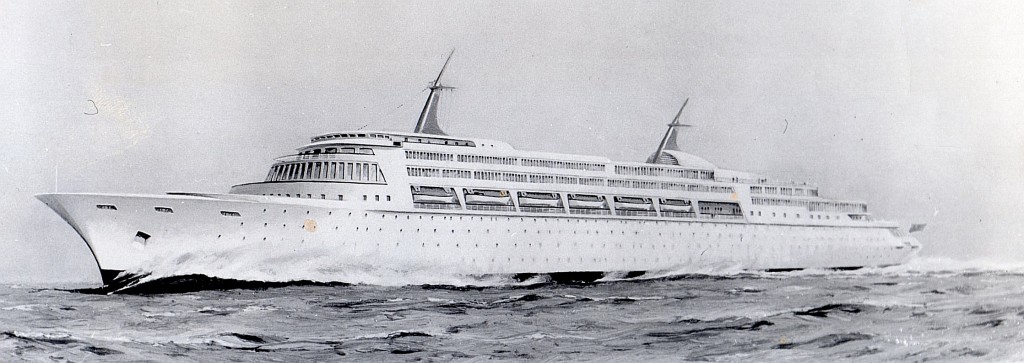Nuclear Merchant Ships: Five Fast Facts
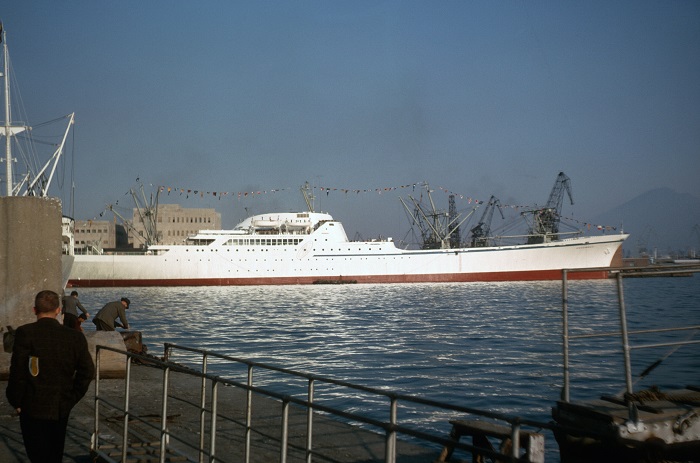
NS Savannah, mid-1960's. Photo taken by crew member Dan Campbell, courtesy NS Savannah Association, Inc.
With the increasing concern these days about the pollutants that commercial ships traveling all over the world's oceans put into the air, there's a rumbling undertone starting again about moving to nuclear powered commercial (that is, non-military) ships. There was a "First Nuclear Ship" era already, and it did give us some valuable lessons.
1. Nuclear commercial ships were proven reliable. While the NS Savannah, the only US-built commercial nuclear powered ship, was in operation, the power plant itself was extremely reliable. Since nuclear ships cannot run at full power all the time (unless you want to run into things) we can't use Capacity Factor to describe their operation; however, "Availability," or the percent of time that a power plant is actually available for power compared to the time that it's scheduled to be, works as a guide. For the NS Savannah, the power plant availability was about 99%; in fact, the plant only ever experienced two significant mechanical failures - one of which was related to wear and was expected.
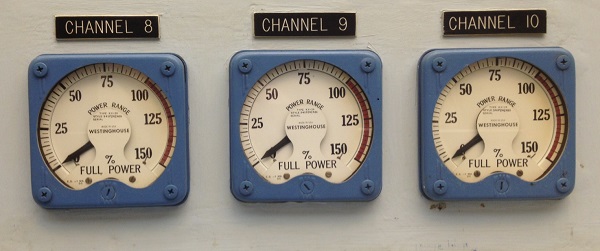
Reactor Power Meters, NS Savannah. These three Westinghouse K-241 meters replaced a single meter with selector switch to change between three channels. The control panels of this ship saw a number of changes over the years as alterations and refinements were made. Will Davis photo.
2. Nuclear commercial ships introduced integral reactors. The era in which the NS Savannah was designed saw a good deal of debate on how nuclear ships should be designed. Initially, it was thought that it might be best if nuclear power plants could be designed to be put into existing ship plans. In this way, a ship of one design could be ordered, potentially, with oil fired steam, diesel, or nuclear propulsion. However, the power plant as designed for NS Savannah was, while great for an initial effort, too big to allow it to simply be substituted into just about any sort of ship design without serious alteration. Thinking along this path led Babcock & Wilcox, who were responsible for Savannah's primary plant, to devise the Integral Pressurized Water type of reactor, or iPWR. This basic concept is the root of a number of today's concepts for Small Modular Reactors or SMR's. The first iPWR, which the company called the "CNSG" for Consolidated Nuclear Steam Generator, went to sea powering the German nuclear ship Otto Hahn in the 1960's and was as reliable as the installation in NS Savannah.
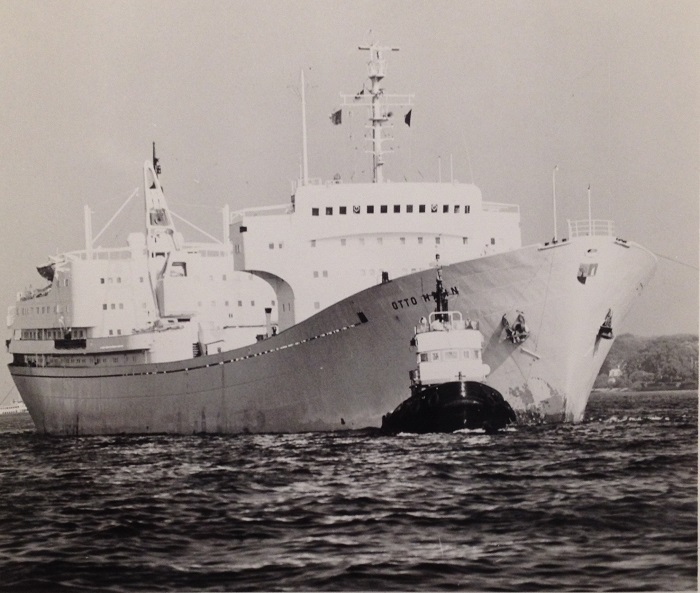
NS Otto Hahn; photo in Will Davis collection
3. Commercialization means Commerce. In the 1960's, it was clear that the US could not claim that it had commercialized nuclear shipping unless there was somewhere for nuclear powered ships to actually conduct trade. This question had to be resolved before any private money would invest in nuclear ships; therefore, in addition to acting as a proof-of-concept, the NS Savannah also acted as an international ambassador. The ship and its missions to various ports secured dozens of agreements that would have allowed future nuclear powered ships to dock and conduct trade. Today, many years later, it's a foregone conclusion that any return of nuclear commercial shipping would have to revisit these long-ago agreements and in all likelihood rewrite them. If that isn't done, well - there isn't anything to do but sail around in circles. And that won't make money.
4. You name it; they studied it. They just didn't build it. Just about anything you can think of in terms of nuclear powered commercial ships was studied from roughly the middle 1950's all the way through the early 1970's. While some concepts were smaller simple freighters (and that's what the NS Otto Hahn actually was) some were very large, heavy oil tankers, which was what the US Congress initially pushed for before President Eisenhower changed the plan to build a hybrid cargo/passenger vessel. There were even plans for impressive high speed nuclear powered ocean liners, as shown above, intended to re-ignite passion for travel by sea and attempt to compete with the then-new jet airliners just beginning to cross the Atlantic. Of course, none of these studies came to be built, for a variety of reasons - reasons mainly centered on initial cost, insurance costs for the vessels, and crew pay. Surprisingly, none of the cancelled conceptual study projects that this writer is aware of were cancelled because of any sort of public disdain or lack of routes; money was always the only issue.
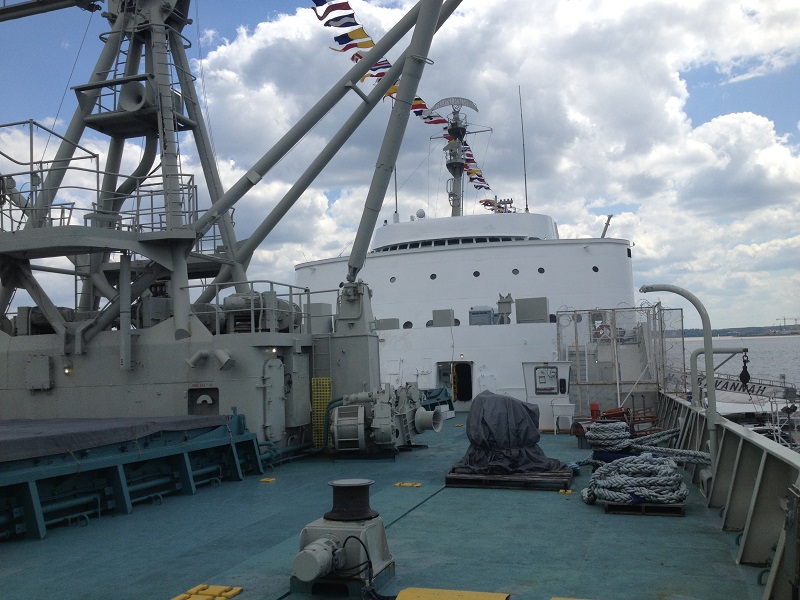
Topside on NS Savannah back in Summer 2014. Will Davis photo.
5. The dream is alive, but the path has changed. Today, with the tremendous amount of international trade sailing the seas, emissions are becoming a hot topic. That's probably the only thing that would tip the scales to make nuclear powered commercial ships move from "was" to "is." We might see a future where emissions from ships at sea or else near land are penalized, and the penalty as an externality makes fossil fired ships extremely expensive. If that happens, nuclear powered ships will again have to be discussed. There's no telling what the overall political and economic path to a new drive for nuclear civil ships would look like, but it's almost sure that the best first step would be to ensure a vibrant SMR industry that can answer the call for compact, high output nuclear steam supply systems if and when nuclear ships are thought to be needed again.
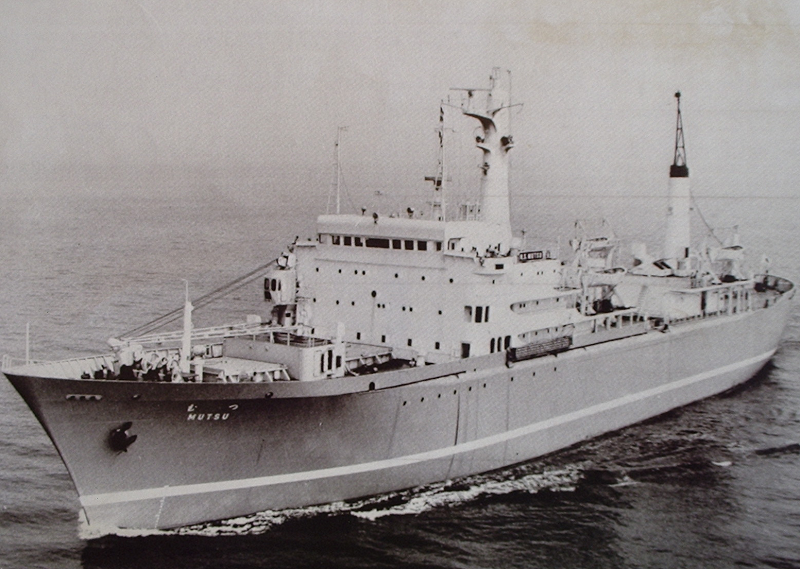
The ill fated Japanese nuclear powered ship Mutsu. This ship was met with a blizzard of public opposition from the very start, and for that reason was practically doomed. The ship only operated occasionally but today is preserved as perhaps the saddest monument to the era of nuclear commercial ships. Photo in Will Davis collection.
 Will Davis is a member of the Board of Directors for the N/S Savannah Association, Inc. He is a consultant to the Global America Business Institute, a contributing author for Fuel Cycle Week, and he writes his own popular blog Atomic Power Review. Davis is also a consultant and writer for the American Nuclear Society, and serves on the ANS Communications Committee and the Book Publishing Committee. He is a former U.S. Navy reactor operator and served on SSBN-641, USS Simon Bolivar. His popular Twitter account is @atomicnews . He's standing at the control panel of the NS Savannah in this photo.
Will Davis is a member of the Board of Directors for the N/S Savannah Association, Inc. He is a consultant to the Global America Business Institute, a contributing author for Fuel Cycle Week, and he writes his own popular blog Atomic Power Review. Davis is also a consultant and writer for the American Nuclear Society, and serves on the ANS Communications Committee and the Book Publishing Committee. He is a former U.S. Navy reactor operator and served on SSBN-641, USS Simon Bolivar. His popular Twitter account is @atomicnews . He's standing at the control panel of the NS Savannah in this photo.


